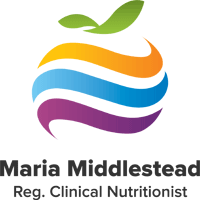Chocolate Truffles
Makes 18
(Vegan; no cane sugar, dairy, gluten or soy)
Are you looking for a special treat or gift that tastes of and symbolizes all the rich, sweet, luxurious pleasures of life? Ask most women and of course this implies chocolate. To make it more challenging though, perhaps the recipient prefers to avoid cane sugar, dairy, gluten and soy. Is monastic austerity all that is left to them? This recipe can come to the rescue.
Some spiritual discipline merits a presence however, as these morsels are best left to improve with age (again like women) – especially if you wish to offer them as gifts. If you let the Truffles sit in the fridge uncovered for three days, they are then dry enough to be packaged. Place them in small bags with ribbons, or in tiny coloured foil confectionary cases (like mini muffin paper liners) and sit them in pretty boxes from a $2 shop.
In contrast, most commercial chocolate comes with lots of refined cane sugar – now the second most likely food sensitivity on the allergy tests we do for clients – as well as hydrogenated fat. This term refers to a process where cheap plant oils are treated over lengthy high heat along with chemical solvents, deodorisers, bleaches and an extra atom of hydrogen. This is added to make the result saturated, firm and shelf stable. But the process seriously oxidises or damages fats and those who eat them. To protect the body from the premature ageing and life-threatening danger of excess oxidation we need to eat sufficient antioxidants.
One of the many families of these vigilant health-protectors is flavonoids and cocoa powder is even higher in these than the much heralded red wine. Cocoa is also a good source of many minerals including the often-deficient magnesium. Magnesium is nature’s relaxant and that is often the feeling that accompanies the consumption of high quality chocolate. This particular recipe also has the right balance of protein, fibre, fat and resistant texture to make it low GI and blood sugar enhancing (see the GOOD HEALTH SOLUTIONS’ report: You Are Just A Few Steps Away From Peak Vitality). Sit, savour and enjoy.
¼ cup (50g) melted palm fat/oil/shortening* (different terms for the same
product)
3 Tbsp tinned coconut cream*
3 Tbsp coconut sugar * or (about 2 disks) finely chopped palm sugar*
…….
2½ Tbsp cocoa powder
3 Tbsp finely chopped dried banana
3 Tbsp finely chopped apricots
¼ cup coconut
¼ cup finely chopped (not ground) toasted almonds, pistachios, or hazelnuts
…….
½ cup ground toasted nuts as above for coating
In a small saucepan over very low heat place the melted palm shortening, coconut cream and palm sugar. Stir until the sugar has melted. Turn off the heat. Stir in the cocoa until smooth. Stir in the dried fruit, coconut and ¼ cup of chopped nuts. Scrape mixture on to a plate, and place in the fridge for 1 hour or longer until completely cool.
If the mixture chills too long and becomes too firm for rolling, bring to room temperature.
Take 1 teaspoon amounts and roll into a moist ball. Roll each one into the ½ cup ground nuts to cover. Place – so sides aren’t touching – on a dinner plate. Allow at least 8 hours for mixture to firm and flavours to develop. To dry completely and for even better texture (and to be suitable for packaging) let sit for 3 days or more. These will store for weeks in the refrigerator. Note: This recipe can be multiplied for larger quantities.
Shopping and Preparation Tips*
• Coconut cream: a tinned product from the South Pacific and found in most supermarkets. It should have the consistency of pouring cream and contain no dairy, flour or added sugar. ‘Lite’ types are not necessary: they just have added water and more processing. Instead use only a small amount of the ‘cream’ version, or thin with water, Milk Option or stock – depending on the needs of your recipe.
• Coconut sugar: granulated; looks similar to raw sugar; mild caramel taste. Buy from health stores; use in baking like brown sugar. Made similarly to palm sugar but from the syrup of coconut palms rather than Palmyra trees. Low 35 GI; good source of alkaline minerals, iron, zinc, some B vitamins.
• Palm fat/oil: firm white fat pressed from palm tree seed oil. Buy sustainable product from health stores. Store in the refrigerator. For detailed outline of its nutritional properties see RECIPES for Better Butter.
• Palm sugar: comes from the syrup of palm trees. It is moist and caramel in colour and taste. Packed in boxes of small brown rounds or squares, it is traditionally used in Thai cooking. It is available from most supermarkets next to other sugars (including organic cane sugars). Chop, grate or melt.



